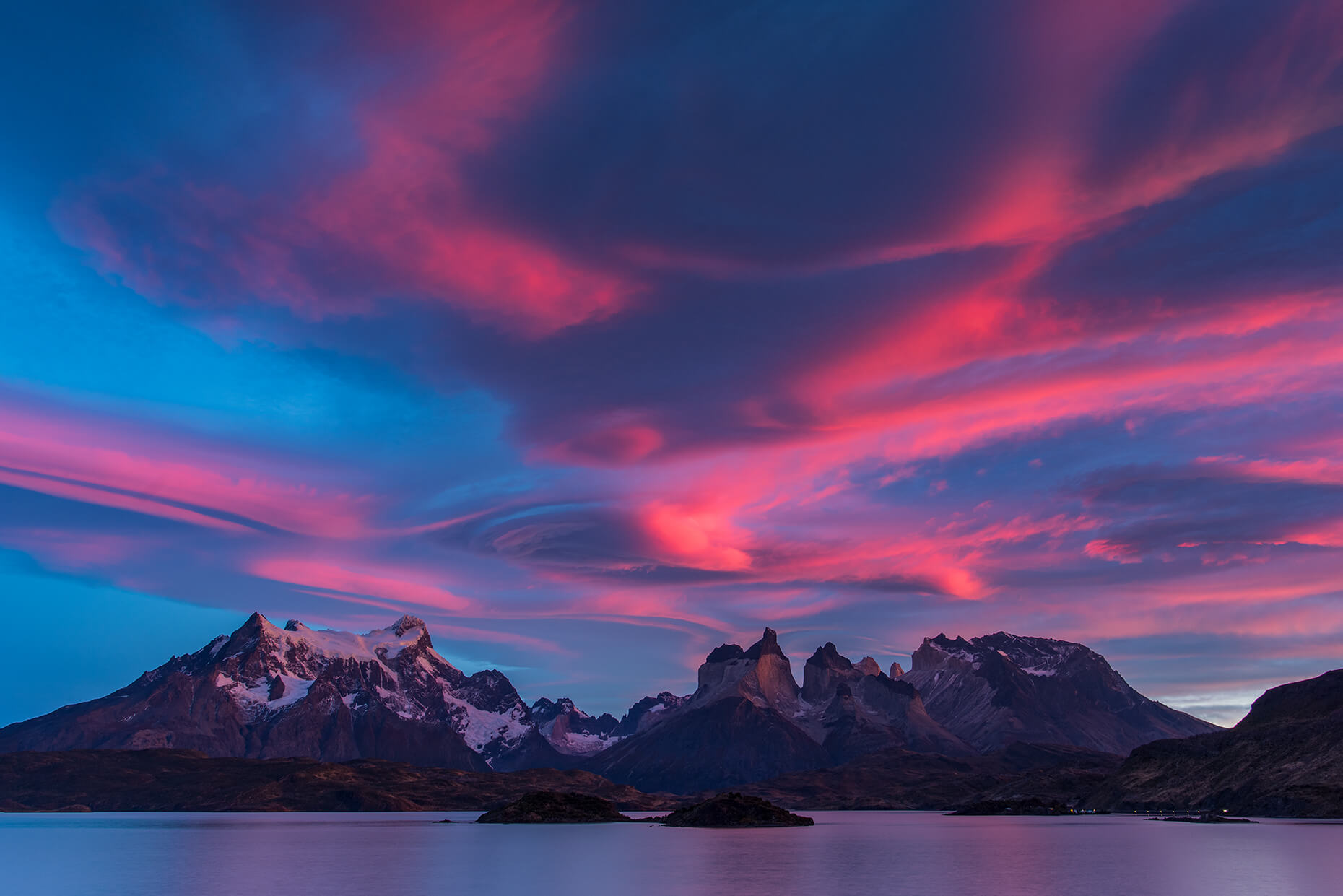Just back from two weeks in Patagonia helping lead a trip for ANPW; what an amazing place! I first visited the area as a climbing guide 25 years ago, and I have been hooked every since. After starting on day one with 75mph katabatic winds, we enjoyed mild weather, no rain and stunning sunrise and sunsets for the next 10 days.
I wanted to mix things up, so this trip I only used prime lenses, no zooms. Look for an upcoming story at Nikon Learn and Explore on my experiences using only primes. They offer some unique advantages, and they force you to move around a lot, which is a good thing. One lens I wanted to really try out was the Nikon 20mm F1.8. I have always loved this focal length for big landscapes, and let me just sum it up here; this lens is going on all my landscape shooting trips.
First, the lens is very small and lightweight. Compared to my 14-24mm, it weighs about 1 1/2 pounds lighter, and is significantly smaller. Another huge benefit compared to the 14-24mm…the 20mm has a 77mm filter size, so I can use all my existing ND and polarizing filters. At around $800, it is a $1000 cheaper. But let’s face it, the 14-24mm is legendary on how sharp it is…I’ve known Canon shooters to buy this lens and use an adapter to shoot with it. But according to DxO results, and what I saw in the field, this is even sharper than the 14-24mm. I’m not saying I don’t love my 14-24mm; it is still my go-to lens for many shoots, and the ability to zoom for shooting adventure sports is critical. But the 20mm is stunning in sharpness.
One last note about the 20mm. Remember using hyperfocal distance when we had a focusing guide on the lens barrel with various aperture settings. I’m happy to report the 20mm has a focusing guide with F16 on the scale, so it is very easy to set the lens for hyperfocal distance at F16. No more guessing what to focus on for the most depth of field.

